RULE OF QUEEN ELIZABETH I, THAT IS WHY ANOTHER
NAME FOR THIS HISTORICAL AND CULTURAL EPOCH IS THE ELIZABETHAN AGE.Queen Elizabeth was the daughter of King Henry VIII and
his second wife Anne Boleyn.
FindSlide.org - это сайт презентаций, докладов, шаблонов в формате PowerPoint.
Email: Нажмите что бы посмотреть
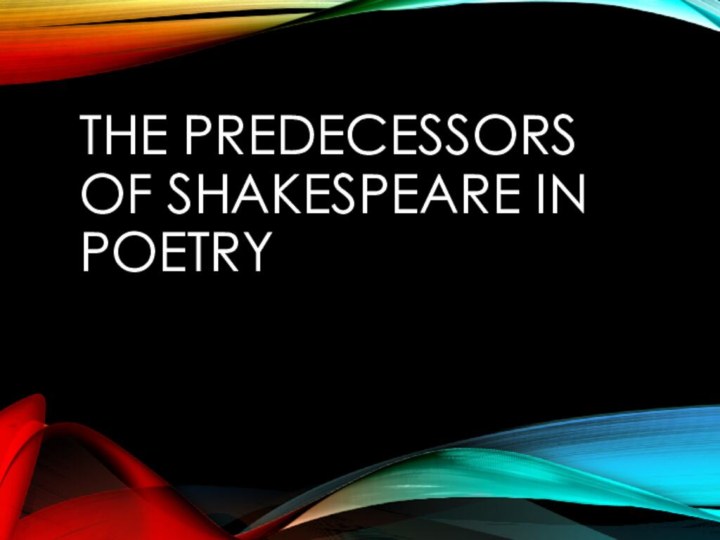
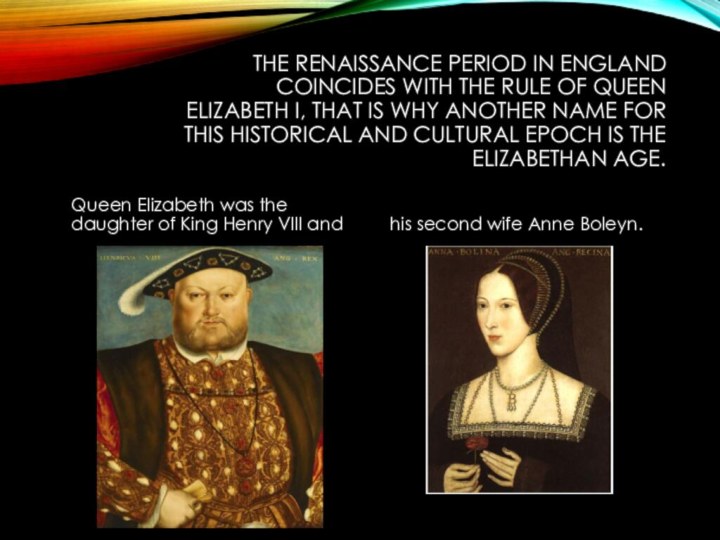
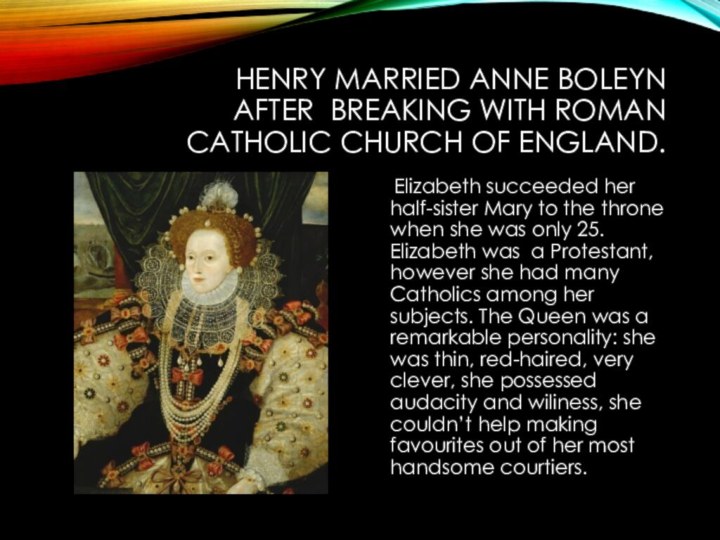
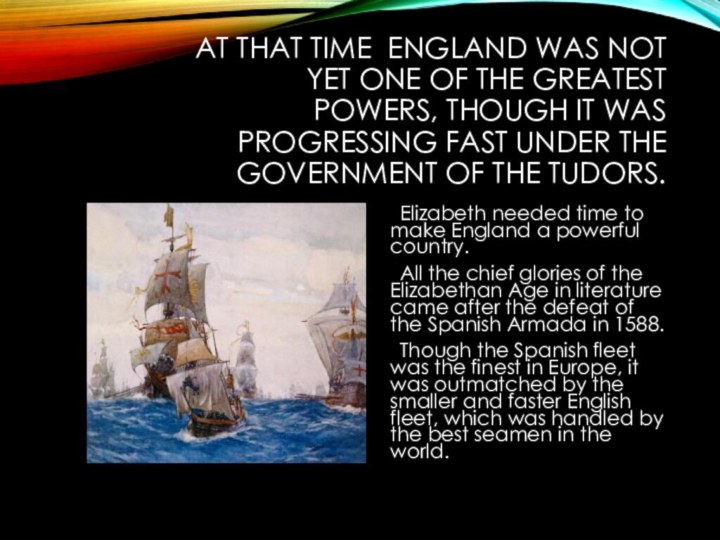

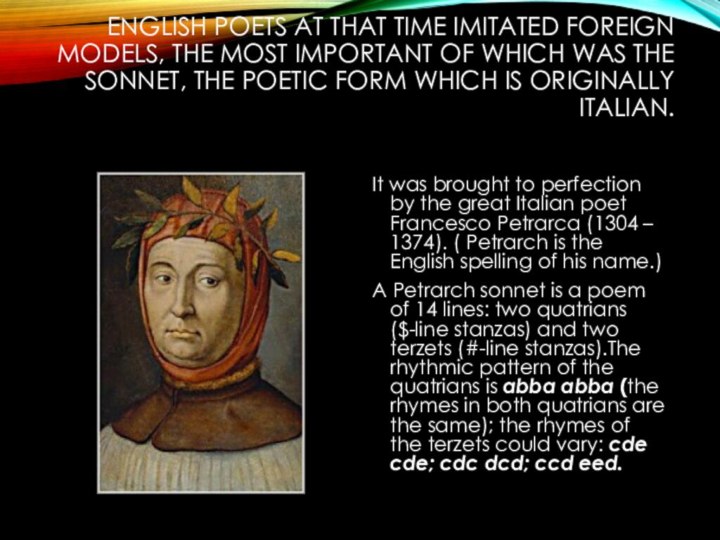

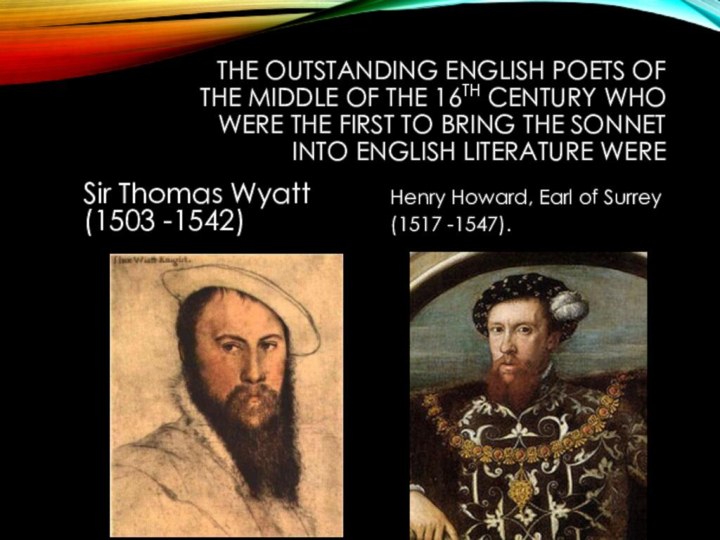
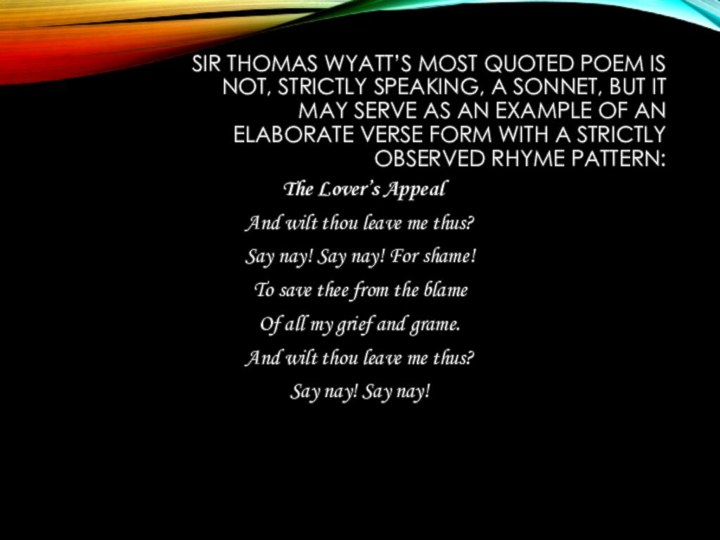
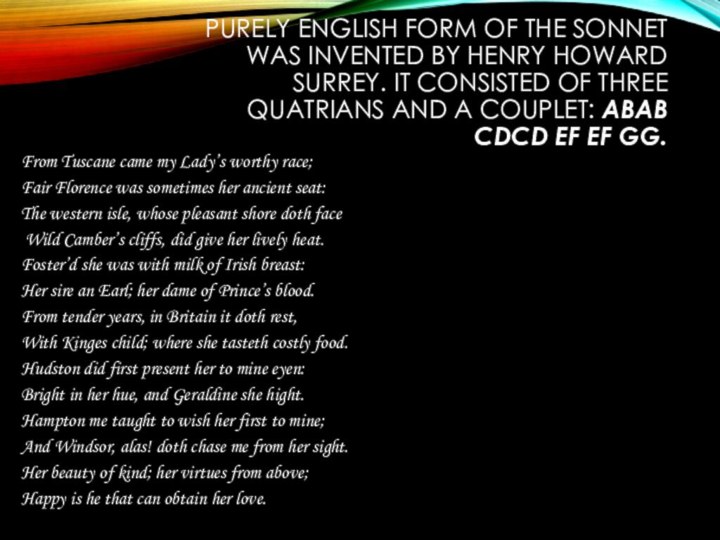
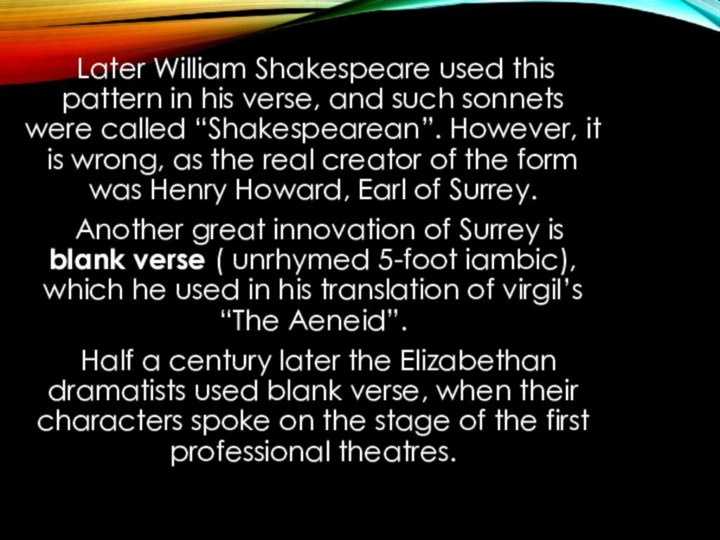

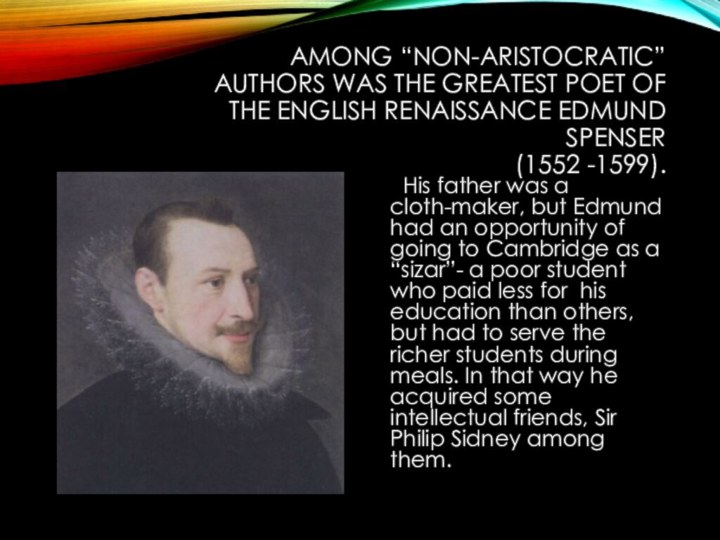
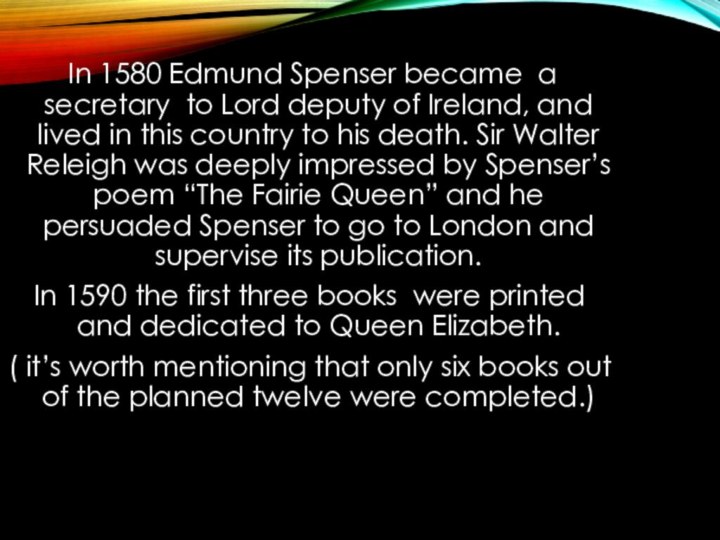

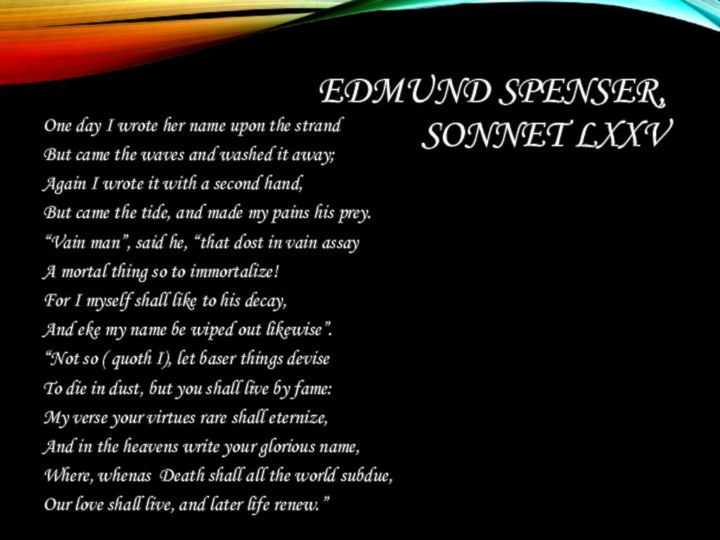
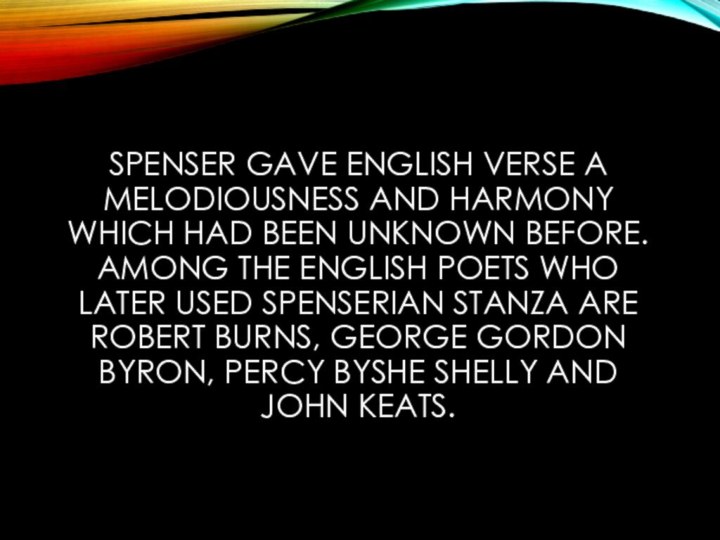
Queen Elizabeth was the daughter of King Henry VIII and
his second wife Anne Boleyn.
Elizabeth needed time to make England a powerful country.
All the chief glories of the Elizabethan Age in literature came after the defeat of the Spanish Armada in 1588.
Though the Spanish fleet was the finest in Europe, it was outmatched by the smaller and faster English fleet, which was handled by the best seamen in the world.
It was brought to perfection by the great Italian poet Francesco Petrarca (1304 – 1374). ( Petrarch is the English spelling of his name.)
A Petrarch sonnet is a poem of 14 lines: two quatrians ($-line stanzas) and two terzets (#-line stanzas).The rhythmic pattern of the quatrians is abba abba (the rhymes in both quatrians are the same); the rhymes of the terzets could vary: cde cde; cdc dcd; ccd eed.
Sir Thomas Wyatt (1503 -1542)
Henry Howard, Earl of Surrey
(1517 -1547).
The Lover’s Appeal
And wilt thou leave me thus?
Say nay! Say nay! For shame!
To save thee from the blame
Of all my grief and grame.
And wilt thou leave me thus?
Say nay! Say nay!
From Tuscane came my Lady’s worthy race;
Fair Florence was sometimes her ancient seat:
The western isle, whose pleasant shore doth face
Wild Camber’s cliffs, did give her lively heat.
Foster’d she was with milk of Irish breast:
Her sire an Earl; her dame of Prince’s blood.
From tender years, in Britain it doth rest,
With Kinges child; where she tasteth costly food.
Hudston did first present her to mine eyen:
Bright in her hue, and Geraldine she hight.
Hampton me taught to wish her first to mine;
And Windsor, alas! doth chase me from her sight.
Her beauty of kind; her virtues from above;
Happy is he that can obtain her love.
After studying at Oxford, he travelled widely on diplomatic missions and served at the court of the Queen. He retired from his duties in 1580 and turned to writing literature, just for amusement. He wrote a pastoral romance in prose
” Arcadia”, a sonnet cycle
“ Astrophel and Stella” , a critical work “ Apology for Poetry”.